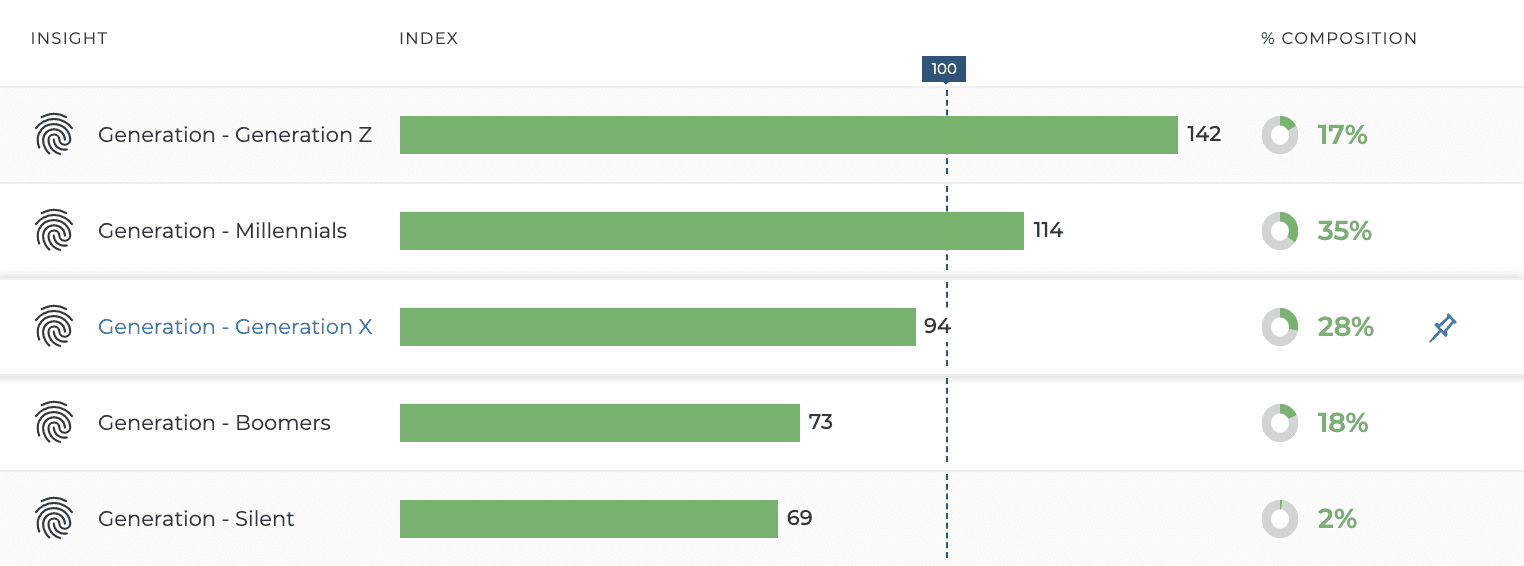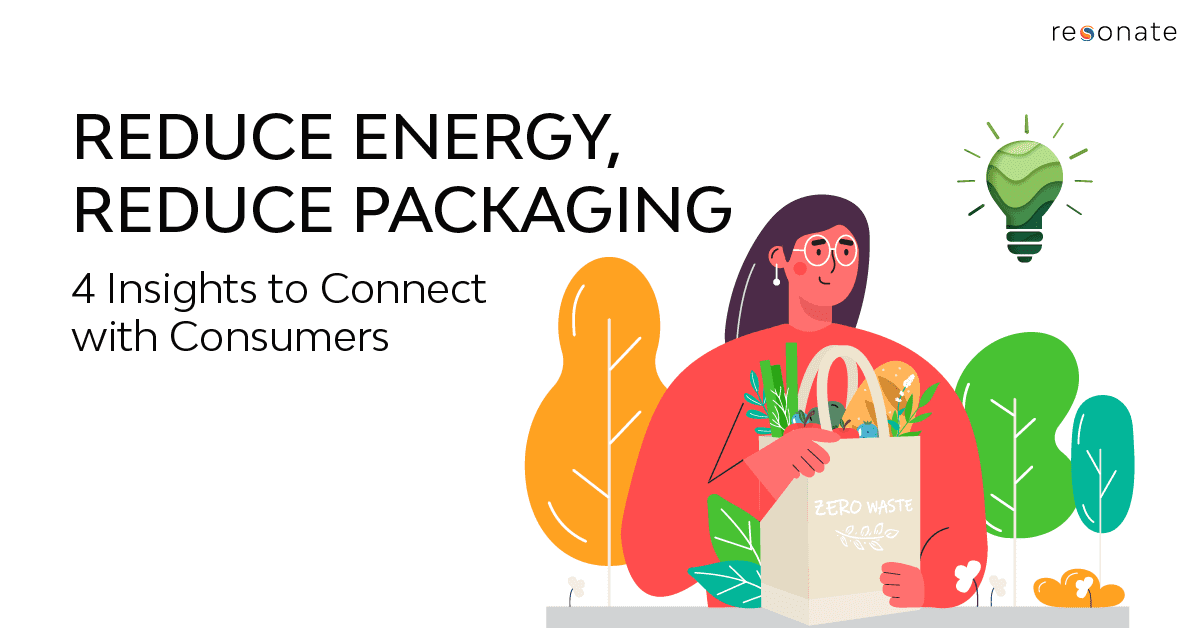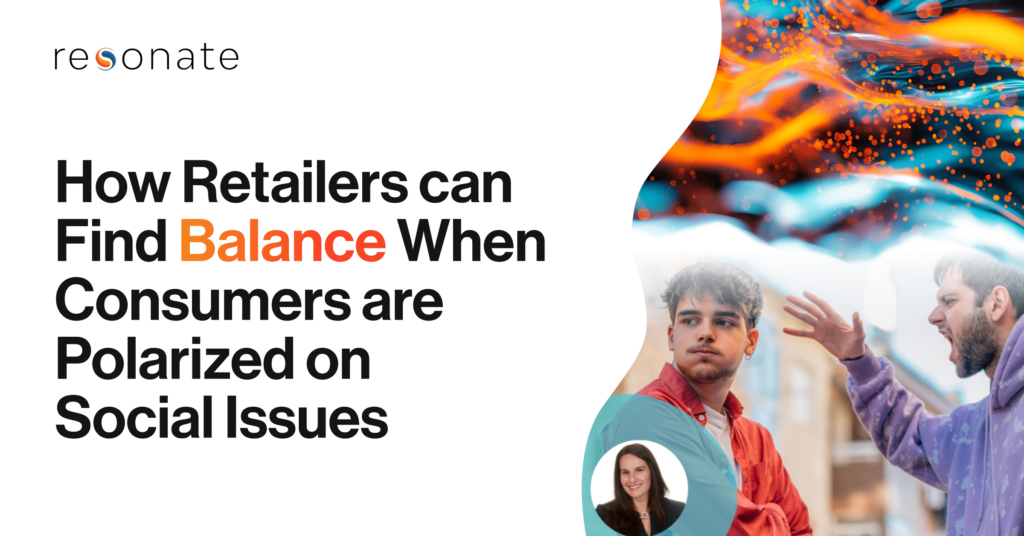Most people say they care about the environment, but who are the environmentally conscious consumers who actually make purchasing decisions based on a company’s policies towards corporate responsibility? And how can you, as a marketer, use a data-driven approach connect with those consumers?
Who Is the Environmentally Conscious Consumer?
To find the environmentally conscious consumer, we looked in the Resonate Ignite Platform at consumers whose purchasing decisions are driven by supporting companies that reduce energy use and reduce packaging. Corporate greenwashing isn’t enough. These consumers want to see policies that make a difference put into action. This group is 42% more likely than the average consumer to be Gen Z and 14% more likely to be a Millennial — younger generations could be leading the way in putting environmental practices into action and holding businesses accountable.
Here are a few quick facts about the environmentally conscious consumer:
- Split almost equally male and female
- 23% have a household income between $25K and $50K
- A majority are unmarried with no children
- They are 31% more likely than the average U.S. online adult to be a student
- Their top retail brands are DSW and Sephora
- They are 48% more likely than the average U.S. online adult to prioritize shopping independently or locally owned
- They enjoy the arts and museums
- A healthy lifestyle, including a gym membership and eating nutritious foods, is important to them

4 Insights to Connect with the Environmentally Conscious Consumer
Consumers today see sustainability and environmentally friendly practices advertised left and right. But they’re savvy customers who know that the action isn’t always there to back it up. They aren’t sure which brands to trust and which to buy from. So, how do you stand out in the crowd, show them that your values align with theirs, and win their business? By connecting on a deeper level than simply saying, “sustainably made.”
The Resonate Ignite Platform gives you a wide lens into the values, behaviors, and purchasing drivers of your target audiences — these are fresh, granular insights you can use to inform your messaging, strategy, product development, offers, and more. Plus, they’re privacy-safe.
Curious what exactly ‘privacy-safe’ data is? Check out our resource center on the latest in privacy news and Resonate’s plan for strong, deep data that balances privacy with personalization.
Insight One: Align Creative with Their Top Values
It shouldn’t come as a surprise that environmentally conscious consumers are 94% more likely than the average consumer to value caring for nature but, what could be less intuitive is that they also value being in charge and being admired. Additionally, they’re driven by living an exciting life.
That means your creative shouldn’t simply stop at a connection to the earth. You need to show that you — and those consumers who align themselves with your brand — are leaders and innovators. You’re leading by example and making a difference and, by buying from you, so are they.

Insight Two: Put Your Actions Front and Center
People who are passionate enough about environmentally conscious consumption to have it inform their purchasing decisions likely won’t stop at the checkout line. They want this to bleed through into the rest of their life. That’s why they’re 92% more likely than the average consumer to criticize companies who don’t live up to their green standards. On the flip side, they’re 89% more likely to recommend companies who do. They’ll do their research and they’ll stop buying a product that isn’t actually as green as advertised.
This is all comes down to these consumers are not just talking the talk, they’re walking the walk. And that means you need to, too. When they look up what you’re doing to reduce energy use and packaging, they need to see answers. Consider adding a page to your website that directly address the steps you’re taking towards environmental action. Make their job easy for them by providing the research.
Insight Three: When They Open Their Wallet, Open Yours
These consumers are 49% more likely to donate money, which is a direct way for your brand to align yourself with their values. Consider how you can make a donation each time they make a purchase. It’s a win-win for them and you.

Insight Four: Meet Them Where They Are
One of the most direct lines to sharing your strides on environmental policies could be social media. Are you meeting these environmentally conscious consumers where they’re hanging out on the internet? They’re more likely than the average consumer to be on many major social media platforms, including YouTube, Instagram, Twitter, Pinterest, Snapchat, LinkedIn, Reddit, and Twitch. On the other hand, they’re on average with most Americans in regard to Facebook and 12% below on TikTok.
Let’s pull it all together in one campaign. This is your plan:
- You’ve built an advertising campaign that emphasizes your leadership in your vertical when it comes to environmental practices. You’re reducing energy use and packaging and setting an example for your peers. This message is set against exciting, adventure-filled imagery that emphasizes a holistically healthy, active lifestyle.
- You offer an incentive to donate 10% of the proceeds with each purchase they make.
- You include a CTA at the end leading your audience directly to your website to learn more about the processes you’ve put in place. You go in detail. You’re backing up your claims with facts because you know these consumers want to understand and see your environmental practices in action.
- The campaign is launched across social, with an emphasis put on YouTube spend, where you know you will reach almost 70% of these consumers.
And there you have it: your data-driven marketing plan to focus in on these environmentally conscious consumers who you know are your target customers. Want to learn more about these consumers or see how we can reveal deep data on your own? Request a demo today to get started.




